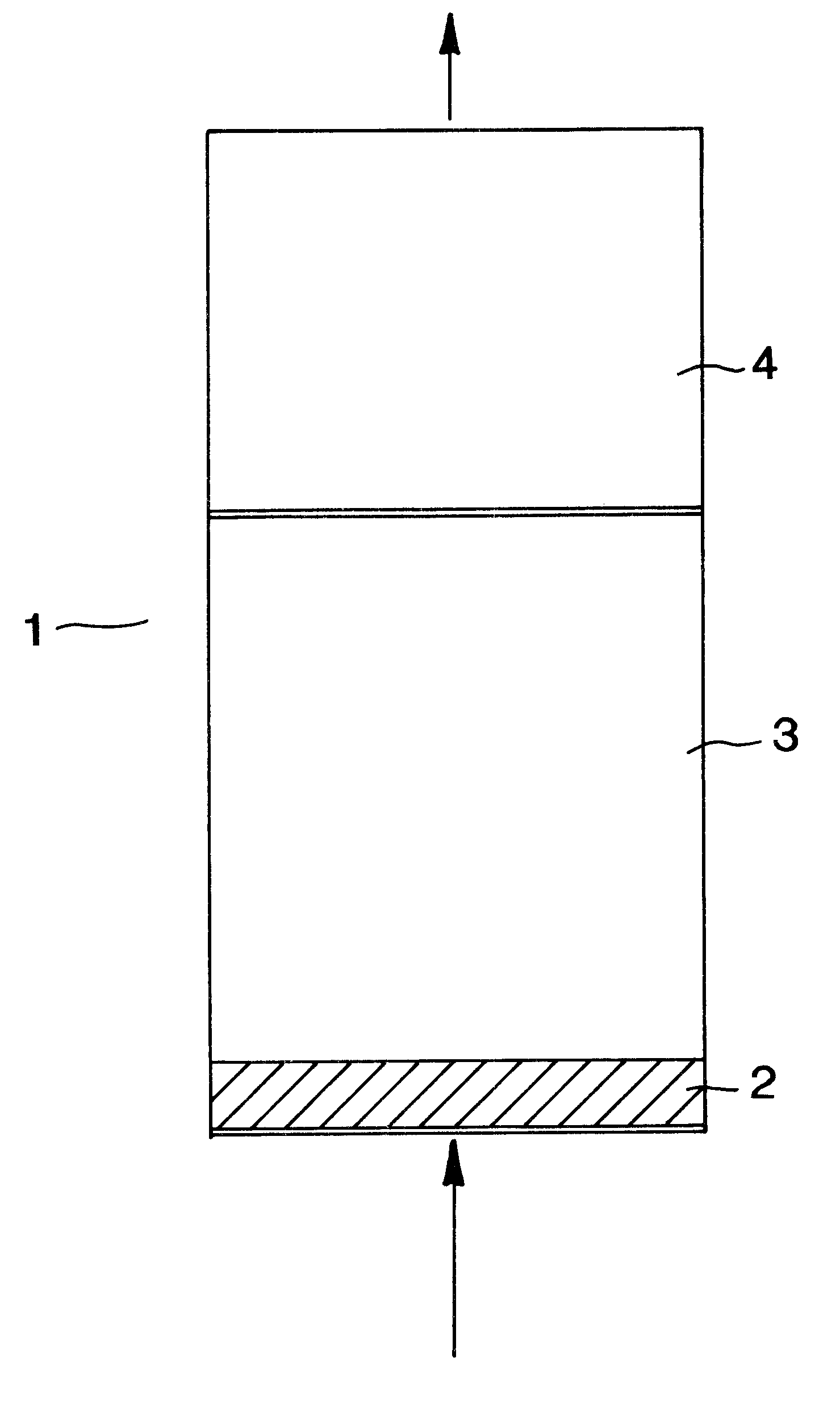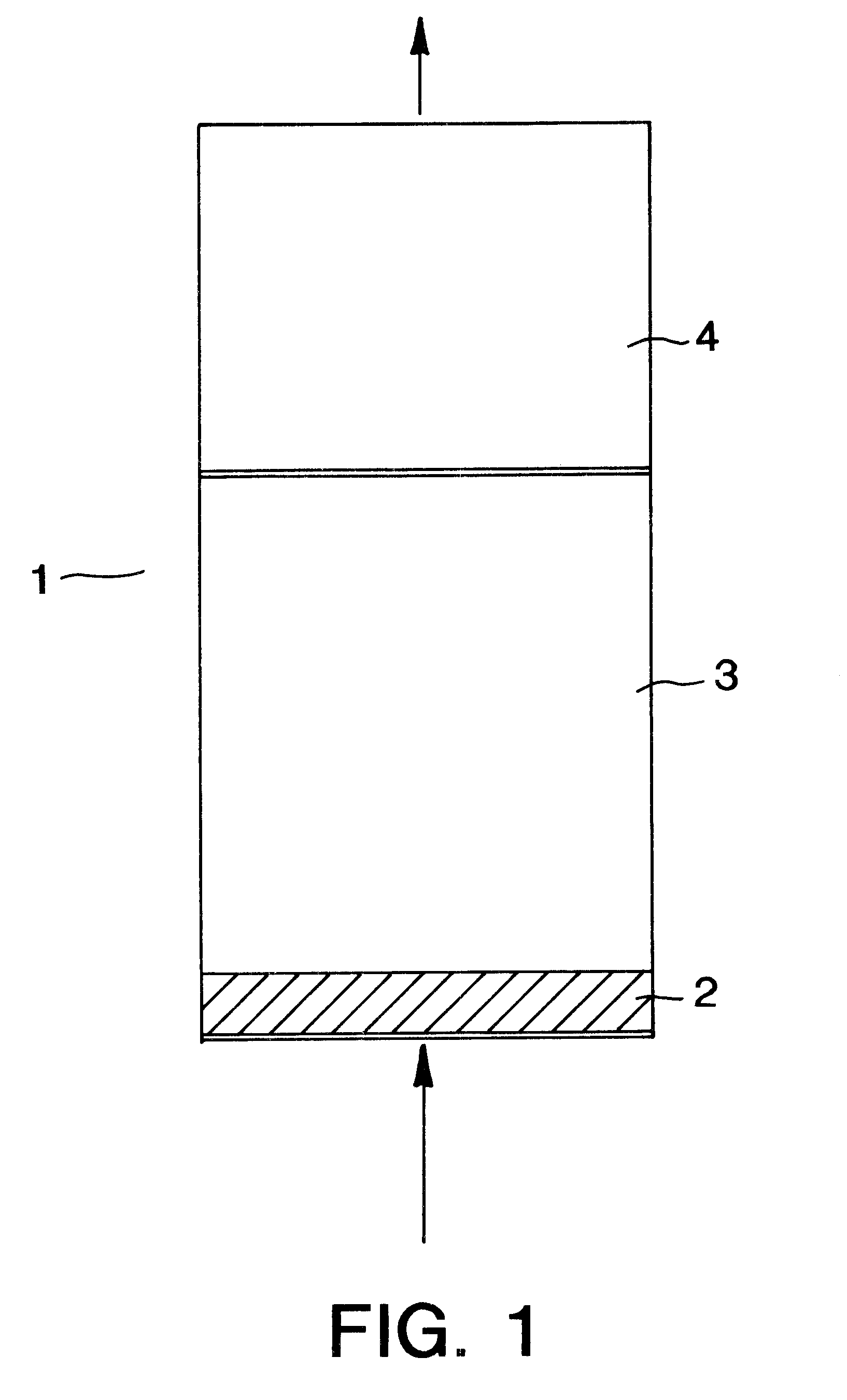Multilayer adsorbent beds for PSA gas separation
a technology of adsorbent beds and psa gas, which is applied in the direction of dispersed particle separation, separation processes, and other chemical processes, can solve the problems of high adsorbent cost, difficult manufacturing, and few commercial processes have been successfully implemented, so as to improve efficiency and reduce cost , the effect of prolonging the production range of psa air separation processes
- Summary
- Abstract
- Description
- Claims
- Application Information
AI Technical Summary
Benefits of technology
Problems solved by technology
Method used
Image
Examples
Embodiment Construction
Non-layered adsorbers containing only LiX (2.3) or LiX (2.0) and layered adsorbers containing LiX (2.0) in the equilibrium zone and either LiX (2.3) or CaLiX (2.3) in the transfer zone were investigated. The total amount of adsorbent was the same in all adsorbers. For the purpose of this example, the adsorbent in the mass transfer zones of the layered beds-represented 25% of the main adsorbent volume which corresponds to the approximate size of the mass transfer zone in a non-layered LiX adsorber operating under similar conditions.
The process conditions included a feed molar flux of approximately 17 moles / m.sup.2. second, a feed pressure of 1.5 bar, ambient temperature of 70.degree. F., and a final desorption pressure of 0.3 bar. A basic VPSA cycle was used which included adsorption, pressure equalizations, evacuation, purge and repressurization with feed. The model represented a two-bed system (nominal 60 TPDO capacity) where the two beds operate in parallel and out of phase with e...
PUM
| Property | Measurement | Unit |
|---|---|---|
| depth | aaaaa | aaaaa |
| temperature | aaaaa | aaaaa |
| temperature | aaaaa | aaaaa |
Abstract
Description
Claims
Application Information
 Login to View More
Login to View More - R&D
- Intellectual Property
- Life Sciences
- Materials
- Tech Scout
- Unparalleled Data Quality
- Higher Quality Content
- 60% Fewer Hallucinations
Browse by: Latest US Patents, China's latest patents, Technical Efficacy Thesaurus, Application Domain, Technology Topic, Popular Technical Reports.
© 2025 PatSnap. All rights reserved.Legal|Privacy policy|Modern Slavery Act Transparency Statement|Sitemap|About US| Contact US: help@patsnap.com



